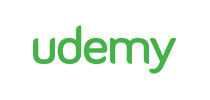1. Key Concepts Introduction
2. Project Integration Key Concepts
3. The Business Case
4. Benchmarking
5. Make or Buy Analysis
6. Rates of Return
7. Expert Judgement
8. Benefits Management Plan
9. Baselines and the Configuration Management Plan
10. Change Requests and the Change Management Plan
11. Project Management Information System (PMIS)
12. The Issue Log
13. Project Management Data and Information
14. Stakeholder Management Key Concepts
15. Organisational Breakdown Structure
16. Stakeholder Mapping
17. Stakeholder Register
18. Stakeholder Engagement Matrix
19. Interpersonal and Team Skills
20. Scope Management Key Concepts
21. Requirements Traceability Matrix
22. Brainstorming
23. Voting and Nominal Group Technique
24. Prototyping
25. Prioritisation
26. Decomposition
27. The Scope Baseline
28. Validate Scope versus Control Quality
29. Schedule Management Key Concepts
30. Rolling Wave Planning
31. Leads and Lags
32. Precedence Diagramming Method
33. Estimating Techniques
34. Resource Levelling versus Resource Smoothing
35. The Critical Path Method
36. Schedule Fast Tracking and Schedule Crashing
37. Cost Management Key Concepts
38. Estimate Ranges
39. Contingency and Management Reserves
40. Accuracy versus Precision
41. Earned Value Analysis
42. Variance Analysis
43. Quality Management Key Concepts
44. The Cost of Quality
45. Cause and Effect Diagram (Ishikawa)
46. Histograms and Pareto Analysis
47. Inspections and Audits
48. Checklists and Check sheets
49. Grade versus Quality
50. Resource Management Key Concepts
51. Responsibility Assignment Matrix (RAM) and RACIs
52. The Team Charter
53. Tuckmans Ladder
54. Meeting Management
55. Conflict Management
56. Communication Management Key Concepts
57. Communication Models
58. Communication Skills
59. The Five Cs of Communication
60. Push and Pull Communication
61. Risk Management Key Concepts
62. Risk Categories and the Risk Breakdown Structure
63. Risk Register
64. SWOT Analysis
65. Probability and Impact Matrix
66. Decision Trees
67. Quantitative Risk Tools
68. Responses for Threats and Opportunities
69. Reserve Analysis
70. Procurement Management Key Concepts
71. Types of Contracts
72. Advertising and Bidder Conferences
73. Claims Administration
